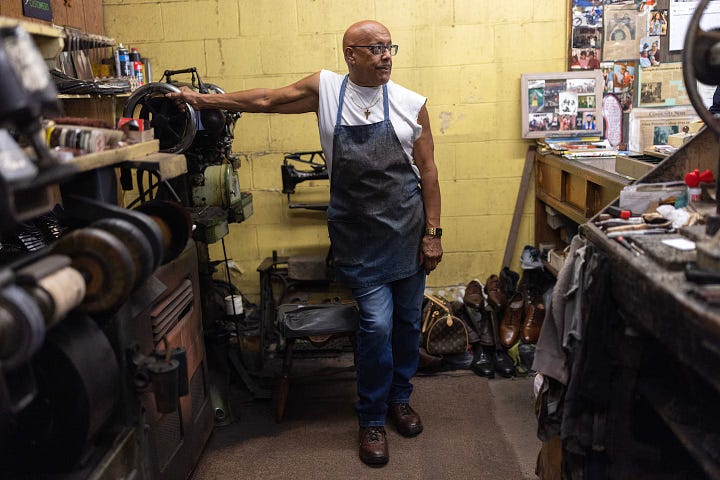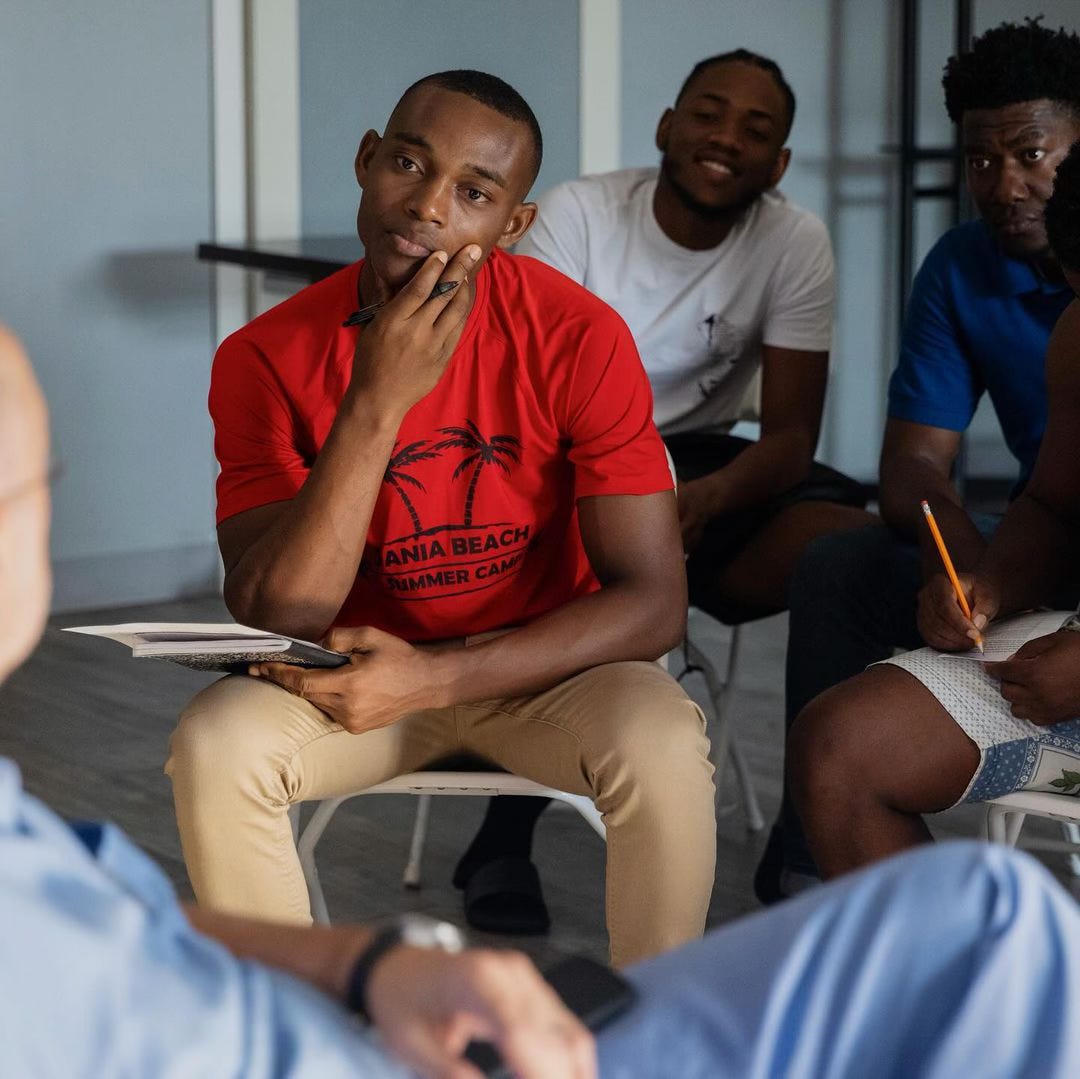Springfield's Haitian Immigrants in the Light
Amid a storm of misrepresentation, authentic portraits challenge distortions and reveal a community's true image.

The controversy surrounding Haitian immigrants in Springfield, Ohio, has highlighted a critical issue: the lack of visibility and accurate representation of this community. Despite comprising a significant portion of Springfield's population, with an estimated 20,000 Haitians in a city of around 60,000, their presence in visual media has been notably scarce.
The lack of visibility of Haitian immigrants in Springfield's media landscape has created a dangerous information vacuum. This void has been filled by baseless claims and hateful rumors, further exacerbating the community's invisibility. Donald Trump’s and J.D. Vance’s baseless claims about immigrants consuming residents' pets have fueled a storm of venom and threats against the Haitian community. This invisibility enables and compounds the hateful rumors as wild accusations spread unchecked.
The Power of Misinformation
At the height of the hysteria, I searched Getty Images for photos of Springfield, Ohio, and found more pictures of ducks and geese than of Haitian community members. Getty accompanied these animal scenes with cautious captions, referencing Trump's "unfounded claims" and mildly stating that authorities had "called into question" the accusations.
Dogwhistle Visuals
The spread of misinformation has led to the creation and circulation of inflammatory imagery, further perpetuating harmful stereotypes.


The far-right rage machine has been churning out salacious memes, altered pictures, and AI-generated material. This example from Trump’s Instagram imagines him wading into one of those Springfield creeks to save the wildlife from the immigrants.
Above right, a supporter touts a campaign sign with an image evoking slavery tropes, depicting young bare-chested Black men chasing Trump through fields to reclaim the cats. The bigotry is breathtaking, especially for a man who shuns pets as much as he does the natural world. Reminiscent of a viral photo we analyzed of a Border Patrol agent on horseback corralling Haitian refugees in Arizona, the campaign photo also demonstrates how easily this warped racist imagery finds its way into the news stream of the presidential campaign.
The Imperative of Humanizing Images
Despite the challenges, more humanizing images of Springfield's Haitians emerged last week—visuals that reflect their true character and contributions to the city. Despite the propaganda, these photos have delivered some presence to the Haitian community, showcasing steadfast regard for them as an intrinsic part of the city’s fabric.

An AP photo story highlighted the solidarity at Central Christian Church, where Haitians found support after a traumatic week.

The church service included a call for an apology and a retraction of the rumors, with Rev. Carl Ruby urging politicians and media figures to share the truth about the community to restore peace and safety in Springfield. The caption of this heartfelt scene reads:
“Central Christian Church congregants stand to applaud members of the Haitian community during service.”


Local news outlets, including a slideshow from the local Springfield News-Sun and visual coverage from local radio station WYSO, have featured photos of Haitians and white residents gathering together at peace rallies, such as the one held at the Springfield Democratic headquarters.

The AP has run several photos of Haitian residents interacting with police officers at community events. Accentuated by the officer’s compassionate gaze, this image emphasizes the city’s commitment to their safety and security.


Mindful of the phrase, "breaking bread breaks barriers," it is no surprise I found multiple photos from Springfield’s Rose Goute’s Creole restaurant. With white residents mixing with Haitians on their cultural turf, these photos blend entrepreneurship with civic exchange.
The Value of Industry


Maddie McGarvey has made perhaps the most intimate photos of Springfield's Haitians since Vance and Trump targeted them. Though Trump has debased their reputation, the economic contributions of Haitian immigrants in Springfield are significant. The images display a powerful sense of identity, community, and work ethic. As McGarvey writes:
By most accounts, the Haitians have helped revitalize Springfield. They are assembling car engines at Honda, running vegetable-packing machines at Dole and loading boxes at distribution centers. They are paying taxes on their wages and spending money at Walmart.
Her portraits of proprietors above also vividly demonstrate ownership and investment.

This photo shows a Haitian worker at a manufacturing plant warmly interacting with the company’s CEO. The image is not only exemplary for the body language. The fact that the Haitian immigrant is holding the floor is a powerful signifier and equalizer.
The Value of Education
These photos of Haitian children in school teem with warmth and curiosity. Their engagement in learning challenges negative stereotypes and showcases the community's commitment to education and the common good.
McGarvey's focus on young Haitian men explicitly counters the vicious stereotypes perpetuated by Trump's racist, fear-mongering graphics. These powerful photos showcase sensitivity and intellectual curiosity, contradicting not only racial stereotypes but also the far-right's promotion of toxic masculinity. The images present a nuanced and humanizing portrayal of Haitian youth, challenging harmful narratives with visual evidence of their character and potential.
I especially like the image of the boy holding the book in one hand and a thick notebook in the other, the youth seemingly deep in thought. And talk about a reference point and an inspiration from the latest chapter in the American saga.
The book he is reading, Bud, Not Buddy by Christopher Paul Curtis, is the story of a ten-year-old African-American orphan named Bud who runs away from a foster home, traveling through Michigan during the Great Depression in search of his biological father. Centered in Flint and Grand Rapids, it aligns with the Great Migration, which saw millions of African Americans moving to the North, Midwest, and West from the rural South.
The Uphill Challenge
The demonization of Haitians in Springfield serves as a stark reminder of the power of misinformation and the critical importance of accurate and generous visual representation. Recognizing and disseminating these humanizing pictures is crucial in combating stereotypes and promoting understanding. However, it is equally important to acknowledge that the current efforts, while valuable, are hardly sufficient in the face of so much hate, political misinformation, and the toxic imagery that floods the media in its wake.
The media must do more to share images of immigrant communities that reveal the truth in broad daylight.
Thank you for visiting Reading the Pictures. Despite our visually saturated culture, we remain among the few sources for analyzing news photography and media images. This post is public, so feel free to share it.
To receive new posts and support our work, consider becoming a free or paid subscriber. Because we are a non-profit, your subscription is tax deductible.







Wow! The power of photography. IRL imagery is stronger than what my imagination pictured. Thanks!
One of your best newsletters Michael!